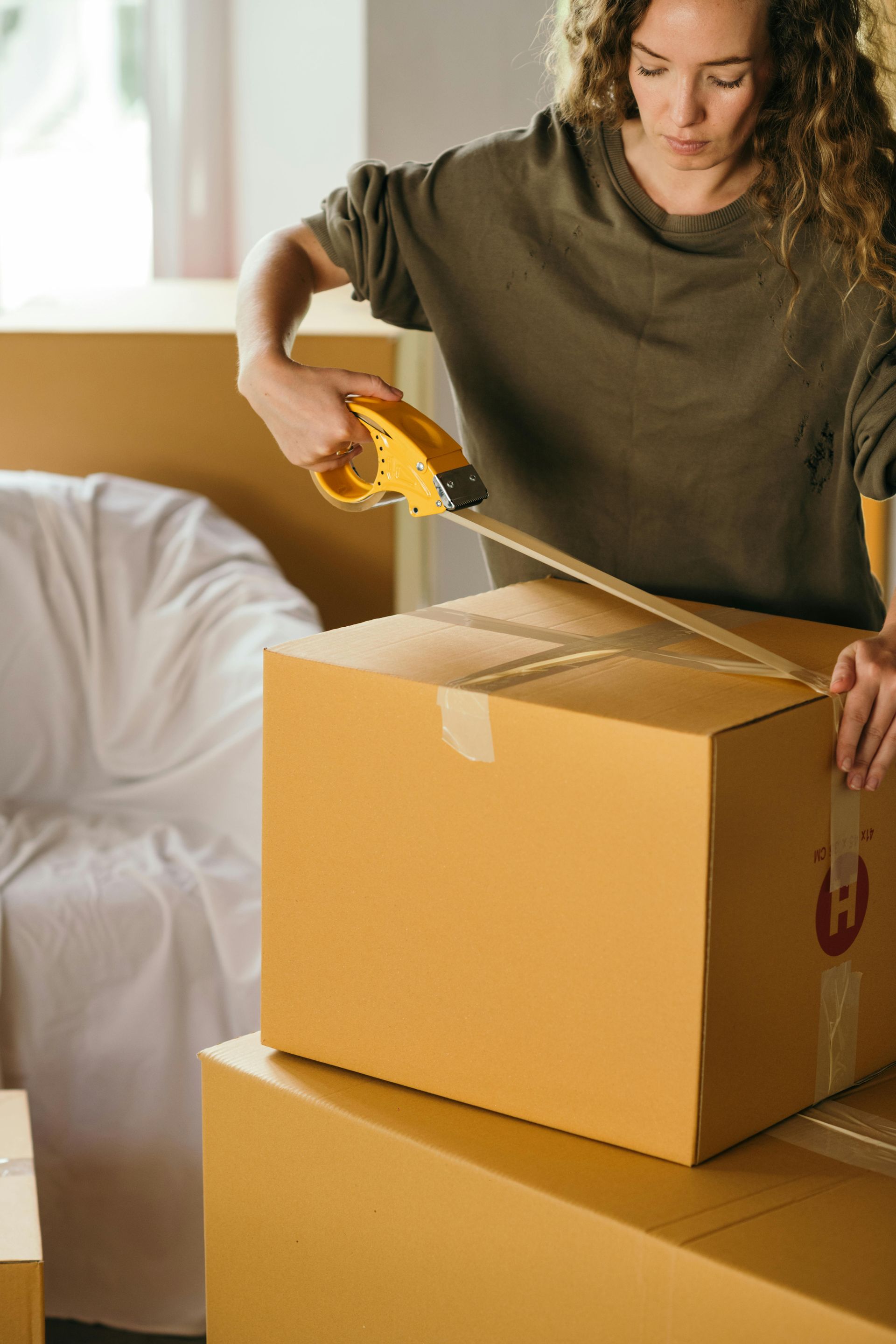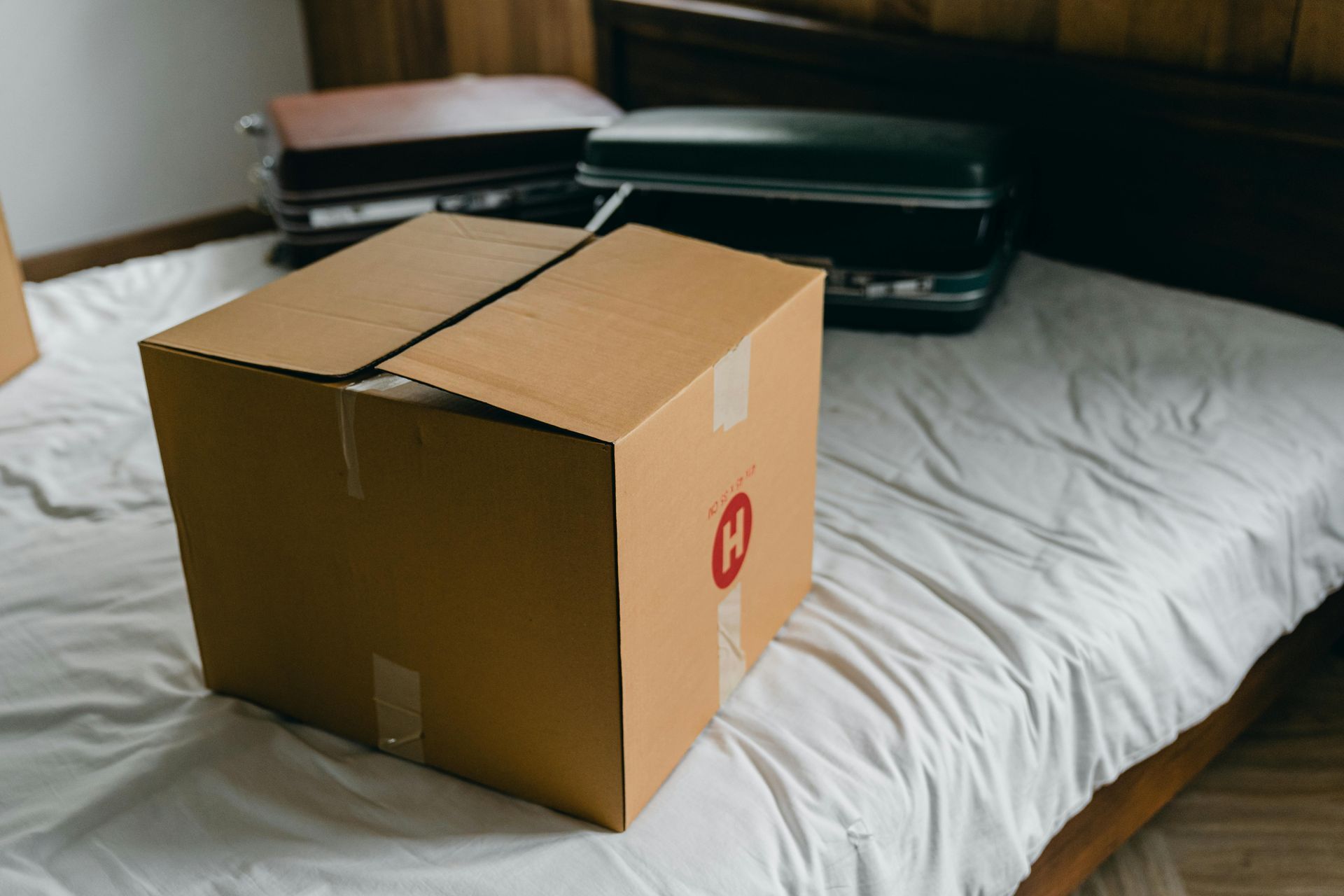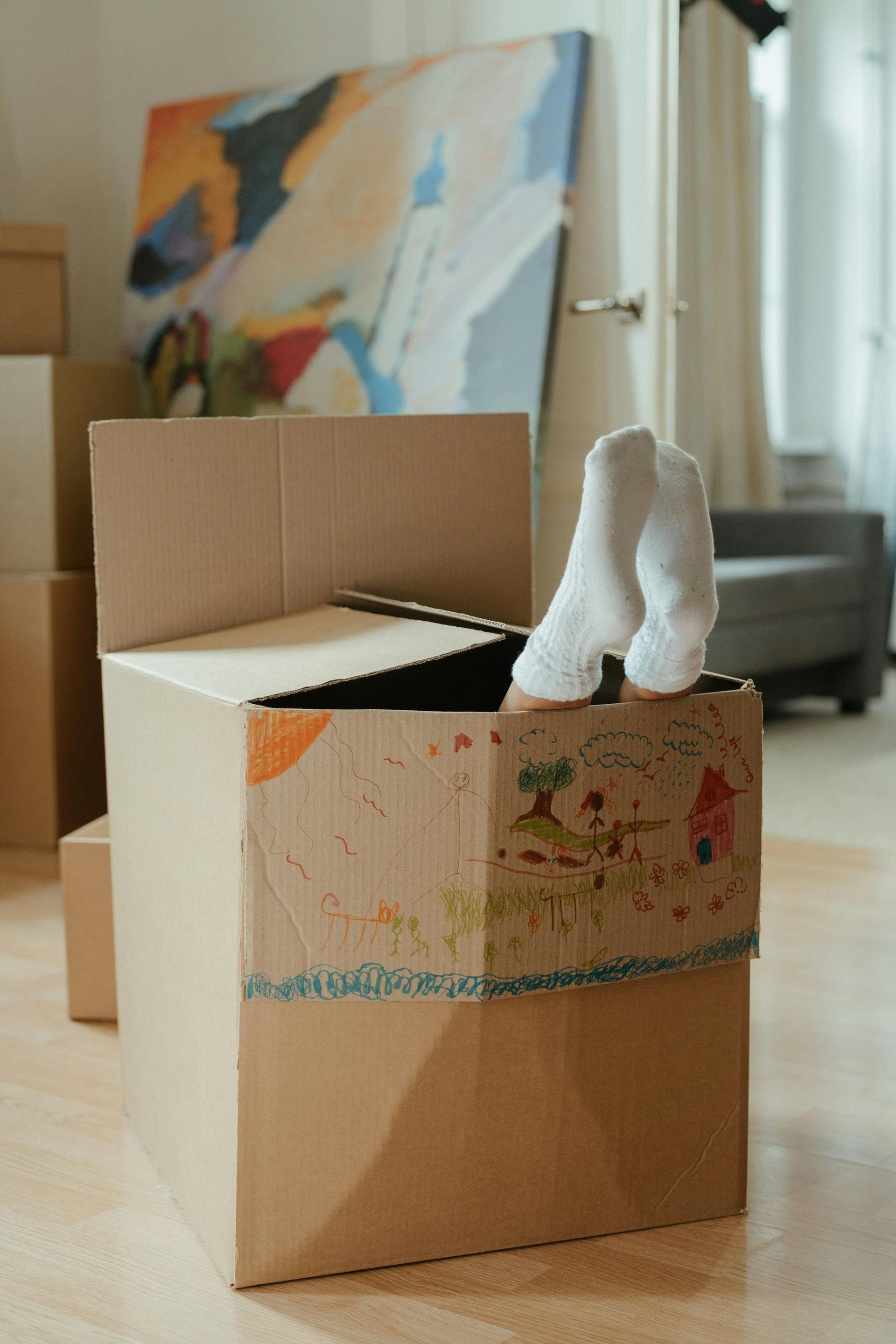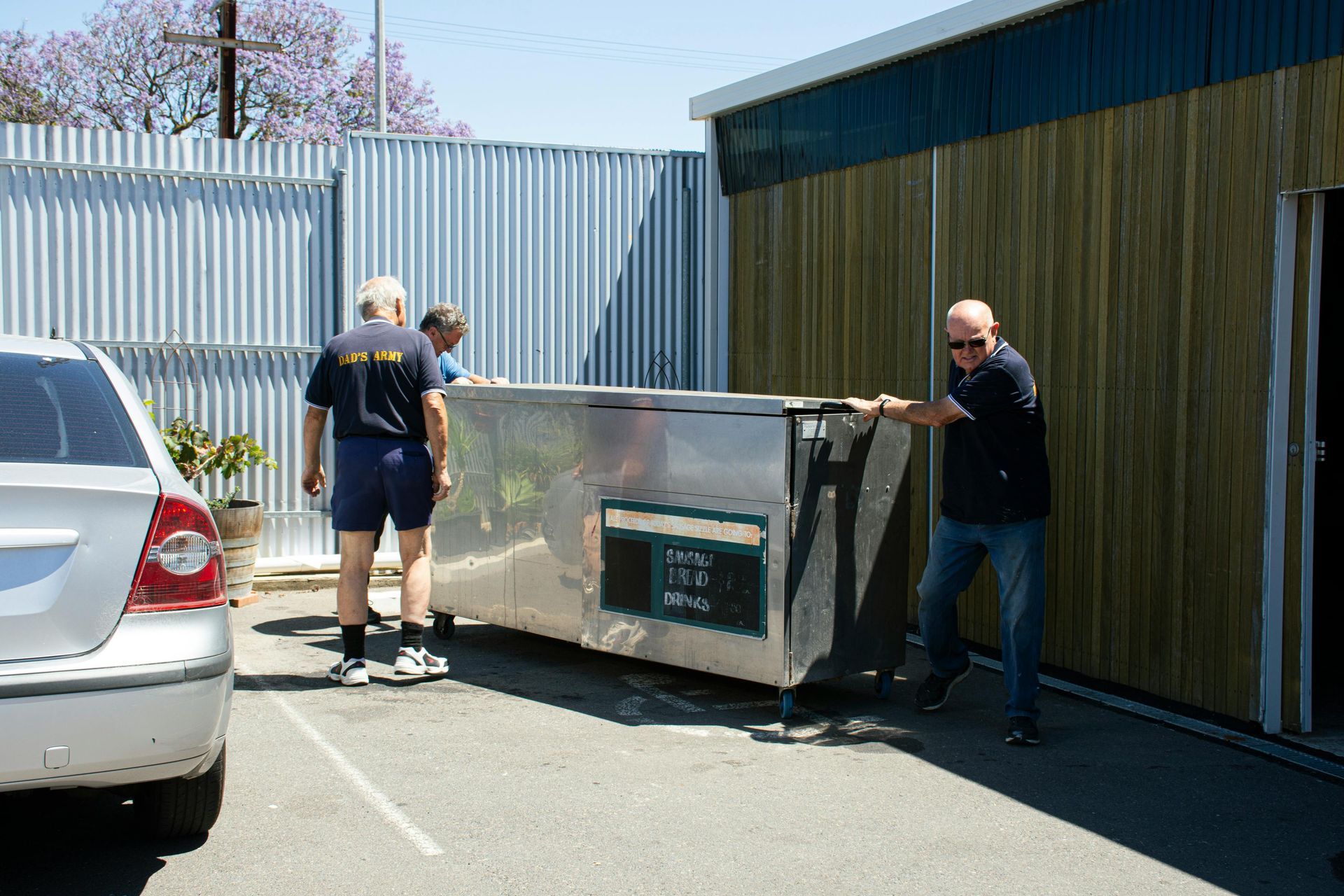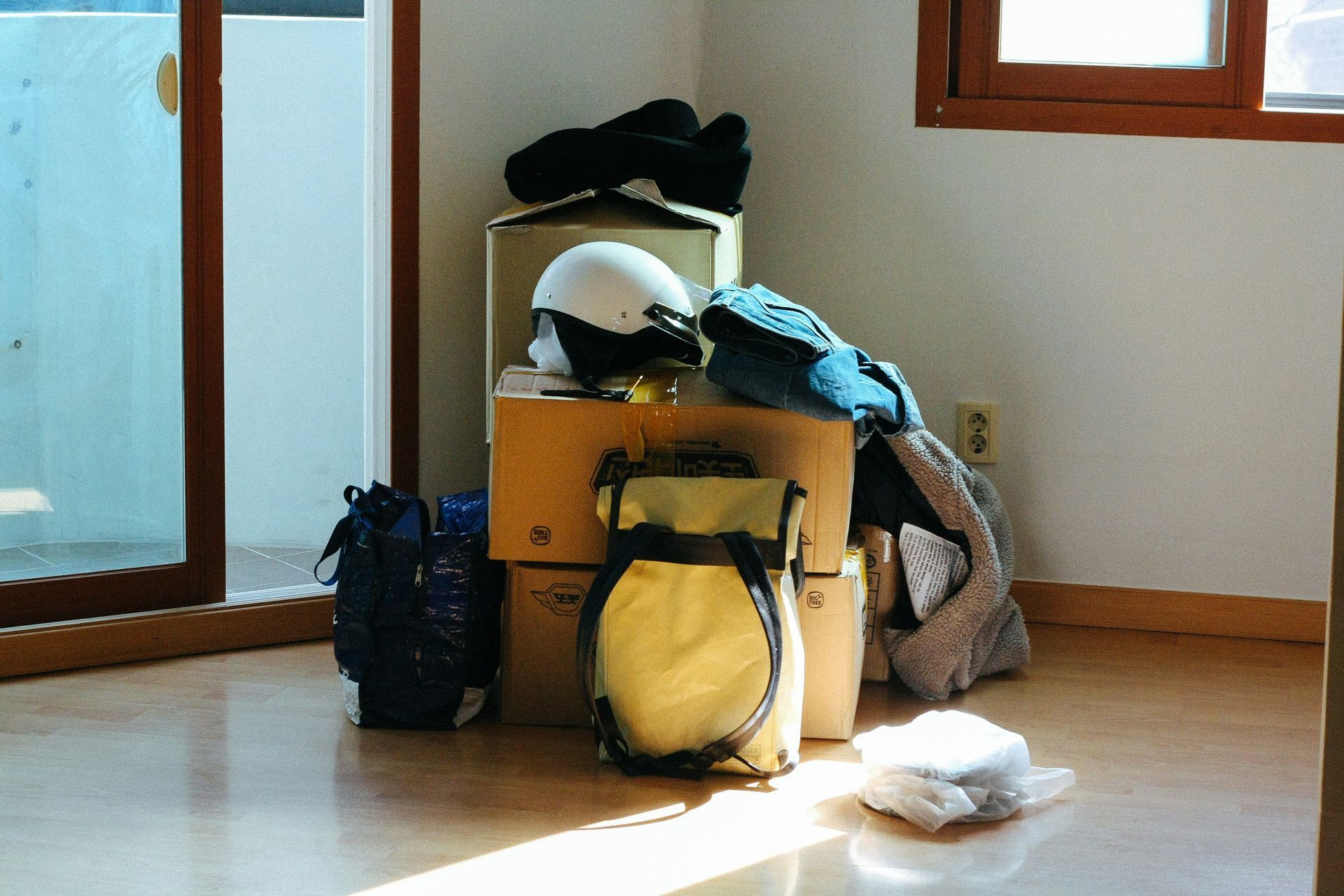How to Pack for a Move Without Losing Your Mind
Start packing early and break it down room by room to keep your head clear. Toss what you don’t need before you pack—it’s freeing and cuts clutter. Get sturdy boxes, bubble wrap, and markers for easy labeling, so you’re not playing detective later. Keep a box with essentials like snacks and chargers handy; trust me, moving without it is chaos. Treat fragile items with extra care, and label everything clearly to save time.
Need help with the heavy lifting? Our residential moving services are designed to make the process stress-free. And if you’re wondering whether we’re in your neighborhood, take a peek at the areas we serve to get started.
Key Takeaways
- Start packing early and create a detailed checklist to stay organized and reduce last-minute stress.
- Declutter and donate unwanted items before packing to simplify the process and minimize clutter.
- Gather quality packing supplies and pack systematically room by room for efficient organization.
- Label boxes clearly with room names and contents to ease unpacking and prevent confusion.
- Prepare a moving day essentials bag with snacks, toiletries, chargers, and important documents for quick access.
Start Early and Make a Detailed Plan
Even if you're a last-minute kind of person, starting your packing early can save you a ton of stress later on. Trust me, getting a head start lets you spread out the work and avoid that frantic scramble on moving day. A solid moving checklist becomes your best friend here—it keeps you on track and helps you manage your time efficiently. You’ll feel like you’re part of a team, all working toward the same goal: a smooth move. Break your packing into smaller tasks, like tackling one room or category each day, and check them off as you go. It’s satisfying and keeps you motivated. Plus, having a plan means you won’t forget those little things that always sneak up on you.
If you're managing a tight schedule or juggling multiple responsibilities, hiring labor-only moving help can free you up to focus on packing and logistics while still getting the muscle you need for moving day.
Declutter Before You Pack
Before you start packing, take a good look at your stuff and sort it by category—it makes things way easier. Don’t be shy about donating things you don’t need; someone else might love them. And if something’s broken beyond repair, it’s time to toss it out and free up some space. If you’ve got more than a few things to offload, our junk removal team can handle the heavy lifting, so you don’t have to worry about trips to the dump or finding a disposal site.
Sort Items by Category
Sorting your stuff by category is a game-changer when packing for a move. When you sort by function, you not only make unpacking easier but also get a clear picture of what you actually own. Group your kitchen gadgets separately from your books, and keep your clothes divided by season or type. Don’t forget to categorize by size, too—it helps save space and keeps boxes from feeling like a jumbled mess. Plus, when everything’s grouped, you’ll feel less overwhelmed and more in control, like you’ve got your move buddy cheering you on. Trust me, this simple step turns chaos into calm, making packing less of a headache and more like a smooth ride toward your new home.
Donate Unwanted Possessions
Clearing out at least a few bags of unwanted stuff can make your move way easier and less stressful. Instead of dragging things you don’t use, why not donate them? Charity organizations are always on the lookout for good stuff, and your unwanted items could really help someone else. Plus, donation drives pop up all the time, making it super easy to drop off your things. It’s a win-win—you lighten your load and join a community that cares. Think of it as sharing a little love while clearing space for your new chapter.
Dispose of Broken Goods
Once you’ve set aside the stuff someone else can use, it’s time to tackle the broken or busted things you don’t want to drag along. Let’s be honest, no one wants to haul a box full of shattered memories or busted gadgets. For broken item disposal, look around for local recycling options or special drop-off points—many communities have spots for electronics, glass, and more. Tossing these items carelessly just piles on stress, and you deserve better. Clearing out broken goods not only lightens your load but also frees up space and peace of mind.
Gather Quality Packing Supplies
Before you start stuffing stuff into any old box, make sure you’ve got the right packing supplies on hand—think sturdy boxes, tape that won’t quit, and plenty of bubble wrap. Choosing durable boxes might sound boring, but trust me, your back and your stuff will thank you later. Let’s talk about what you really need to keep everything safe and sound during the move.
Essential Packing Materials
Packing supplies are your moving day best friends—you don’t want to skimp on them. Start with strong packing tape to keep your boxes sealed tight; trust me, you’ll thank yourself when nothing spills or falls apart on a moving day. Bubble wrap is another must-have—it cushions your fragile items like a cozy little hug, so they arrive safe and sound. Don’t forget packing paper or old newspapers to fill gaps and prevent shifting. Grab a few permanent markers to label boxes, making unpacking way less stressful. And hey, if you’re feeling fancy, some stretch wrap helps keep furniture and odd-shaped stuff snug. When you gather these essentials, you’re not just packing—you’re setting yourself up for a smooth, sane move with your crew cheering you on.
Choosing Durable Boxes
Since your boxes are the backbone of your move, choosing ones that won’t fall apart halfway through is a game-changer. You want sturdy box types and the right box sizes to keep your stuff safe and make packing less stressful. Not all boxes are created equal—some handle heavy books, while others are perfect for fragile items. Picking the right box feels like joining a moving crew where everyone’s got your back.
Here’s a quick guide to help
you pick:
| Box Type | Best For | Common Size |
|---|---|---|
| Small | Books, gadgets | 16” x 12” x 12” |
| Medium | Kitchen, toys | 18” x 18” x 16” |
| Large | Bedding, clothes | 24” x 18” x 18” |
Pack Room by Room
Once you get started, tackling your move room by room makes the whole process way less overwhelming. Start with one space—say your bedroom—and gather all your bedroom essentials. Packing this way helps you focus, so you’re not staring at a mountain of stuff that feels impossible to sort. Plus, it’s easier to remember where things go when unpacking. When you move on to the kitchen, keep kitchen organization in mind. Group items logically—pots with pans, utensils together, and pantry goods in another box. This keeps your new kitchen functional right away and cuts down on chaos. Breaking your packing into smaller chunks also gives you little wins, building momentum and keeping stress low. It’s kind of like turning a big puzzle into manageable pieces. If you’re moving in or out of a rental, don’t forget that move-in and move-out services can take care of the deep cleaning so you can focus on settling into your new space.
Label Boxes Clearly and Consistently
Even if you’re super organized, without clear labels, unpacking can turn into a treasure hunt nobody signed up for. You want to keep your sanity intact, right? So, focus on clear labeling and consistent markings on every box. Use big, bold markers and stick to a simple system—like room names or numbers. This way, you and your helpers will know exactly where everything goes, making unpacking a breeze and everyone feel part of the team.
Here’s a quick example to get you started:
| Box Label | Room | Contents |
|---|---|---|
| Kitchen-01 | Kitchen | Pots, pans, knives |
| Bedroom-02 | Master Bedroom | Clothes, linens |
| LivingRoom-03 | Living Room | Books, decor |
Protect Fragile Items With Care
Now that your boxes are clearly labeled, it’s time to think about what’s inside—especially the fragile stuff. You don’t want your favorite mug arriving cracked or your grandma’s vase shattered. Wrap each fragile item carefully in bubble wrap, making sure to cover every inch. Don’t skimp on the layers—think of it as giving your treasures a cozy winter coat.
When you’re packing them into boxes, fill empty spaces with packing peanuts to keep things from shifting around. This little cushion army stops bumps from turning into breaks. Remember, heavier items go at the bottom, lighter and more delicate ones on top. If you’re feeling crafty, use old newspapers or soft clothes to add extra padding. Taking these steps shows you care about your things—and hey, it saves you from that heart-sinking moment when you open a box and find something broken. Protect your fragile items like you’d protect a friend’s feelings—gently and with a smile!
Keep Essentials Accessible on Moving Day
Since moving day can turn into a whirlwind, you’ll want to keep your essentials within easy reach. Think of that one box or bag as your moving day lifeline—it should hold all your must-haves, like snacks, chargers, important documents, a change of clothes, and basic toiletries. Having these moving essentials handy saves you from digging through a sea of boxes while everyone else’s patience runs thin. Plus, it keeps your day of organization smooth and stress-free, letting you focus on settling in instead of hunting for toothpaste. Not sure how long this whole process might take? Take a look at our guide on how long it takes to move a one-bedroom apartment for a breakdown of timing, tasks, and what to expect from start to finish.
Frequently Asked Questions
How Do I Find Reliable Movers for My Relocation?
You should check moving company reviews online to find trustworthy movers. Don’t forget to get a relocation cost estimation from several companies, so you feel confident and part of a community that supports your smooth changeover.
What Is the Best Way to Handle Moving With Pets?
Oh sure, moving with pets is a breeze—if you enjoy chaos. You'll want to prioritize pet travel comfort and pet safety, creating a calm space for them so they feel part of your moving tribe, not left out.
Should I Purchase Moving Insurance for My Belongings?
You should consider moving coverage options carefully, evaluating risks to your belongings. Protecting what matters helps you feel secure and valued during the move. Don’t skip insurance—it’s a smart way to safeguard your cherished things.
How Can I Avoid Damage to Electronics During the Move?
Like a fortress guarding treasure, you’ll shield your electronics by using quality packing materials. Wrap each device carefully, label boxes clearly, and guarantee electronic safety—because protecting your valued belongings keeps your new home welcoming and secure.
What Are the Most Common Moving Scams to Watch Out For?
You should watch out for moving fraud like hidden fees or bait-and-switch tactics. Scammers often use pressure to get you to pay more. Stay connected with trusted movers, and don't let scam tactics isolate you.
Final Thoughts
Moving can feel like you’re juggling flaming swords, but if you start early, pack smart, and label like a boss, you’ll keep your sanity intact. Remember, decluttering saves you from hauling useless stuff, and keeping essentials handy means no frantic treasure hunts on moving day. Follow these tips, and you’ll breeze through packing without losing your mind—or your favorite coffee mug. Trust me, you’ve got this!
Want to hear from folks who’ve done it before? Check out our
customer reviews for real stories and moving tips that worked. Got questions or ready to book your move?
Contact us today—we’re here to help make your move as smooth as possible.





